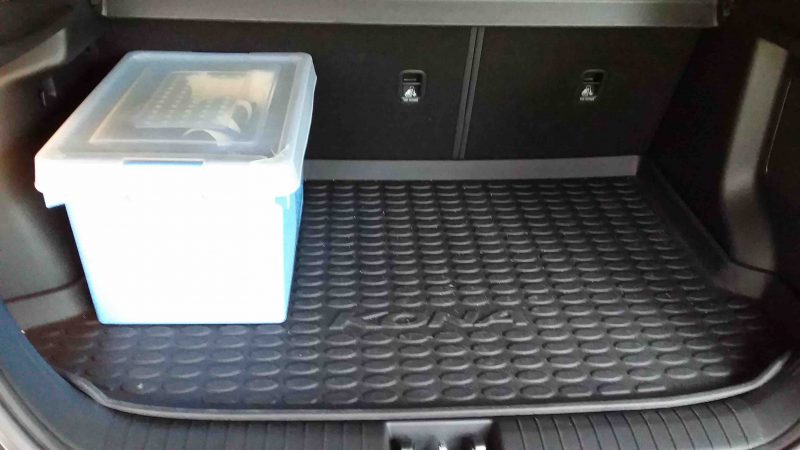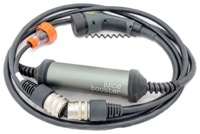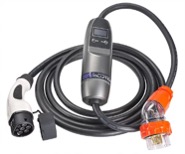- 简体中文
- Español
- Português
- русский
- Français
- 日本語
- Deutsch
- tiếng Việt
- Italiano
- Nederlands
- ภาษาไทย
- Polski
- 한국어
- Svenska
- magyar
- Malay
- বাংলা ভাষার
- Dansk
- Suomi
- हिन्दी
- Pilipino
- Türkçe
- Gaeilge
- العربية
- Indonesia
- Norsk
- تمل
- český
- ελληνικά
- український
- Javanese
- فارسی
- தமிழ்
- తెలుగు
- नेपाली
- Burmese
- български
- ລາວ
- Latine
- Қазақша
- Euskal
- Azərbaycan
- Slovenský jazyk
- Македонски
- Lietuvos
- Eesti Keel
- Română
- Slovenski
- मराठी
The essential electric vehicle traveller’s kit
2021-07-20
Given the lack of public electric vehicle charging infrastructure on many routes in Australia (including on almost all of my EV Long-Weekend route) carrying a few options for charging is a must.
The current situation is a bit like the early days of petrol cars before the petrol pump was born …. but
- It is a lot safer than carrying 2 gallon petrol tins on the back seat and
- there are a lot more power outlets around now that there were in 1919!
So, what did I carry in order to feel comfortable when travelling beyond a return range of my home?
Well, my bits-and-bobs lead collection includes:
- 15A/3.6kW portable elecric vehicle supply equipment (EVSE), which I built in the days when no such things were available;
- 2kW/2.4kW emergency EVSE from Hyundai. It is worth noting here that not quite all the EVs sold here come with an emergency EVSE – so check that there is one with yours. If not – I would strongly recommend buying one. Would you travel without neither of a spare tyre or bottle of inflator goo?
- Type 1 to Type 2 adaptor. I carry this in case I pull up at an old public EVSE that still has a Type 1 (J1772) plug;
- Type 2 to Type 2 ‘BYO’ style lead for use with the newer public AC EVSEs that now come without leads, and
- a very heavy duty 15A extension lead for serious emergencies, to use where the only available power outlet is inaccessible in any other way. That lead by the way I have mentioned in an FAQ article on whether it safe to use a power point to charge my EV): It is not a standard 15A hardware-bought lead, rather it is one made with 2.5mm2conductors and rated for 24A continuous use. (Comfortably over the 15A it will carry).
 FIGURE 1. THE LEAD COLLECTION. IMAGE: BRYCE GATON
FIGURE 1. THE LEAD COLLECTION. IMAGE: BRYCE GATON
Here’ a picture of my EV tool kit: Clockwise from top left:
- Extra heavy-duty 15A extension lead
- 6kW portable EVSE with Type 1 lead
- Type 2 to Type 2 BYO lead
- Type 1 to type 2 adaptor
- Emergency 2/2.4kW EVSE supplied by Hyundai
 FIGURE 2. LEAD TETRIS CAN MAKE THEM APPEAR SMALLER THAT THEY LOOK … IMAGE: BRYCE GATON
FIGURE 2. LEAD TETRIS CAN MAKE THEM APPEAR SMALLER THAT THEY LOOK … IMAGE: BRYCE GATON
As you can see from fig. 1 and 2 – even playing lead Tetris (yes, they all those leads do pack into that box!) leads can take up an annoying amount of room in the boot. However there are ways to reduce the tangle.
First of all – not all these leads will be needed into the future. As Type 1 is no longer used on EVs in Australia (and as older Type 1 EVSEs get phased out) eventually the Type 1 to 2 adaptor will become unnecessary.
Furthermore, carrying a higher power portable EVSE will be made redundant when EVSEs become commonplace at accommodation destinations, shops, workplaces, public buildings, roadhouses etc., etc.
At that point, all you will need is a BYO lead for the occasional use of a public AC charger and the emergency EVSE provided by (most) EV manufacturers.
(This latter only being needed in the unlikely event of running too low to make it to a public AC or DC EVSE – which by the way, you can even now easily find via a charging App on your phone).
Even the extension lead will be made unnecessary as charging points and outlets will have been installed with EVs in mind.
In fact, in the future those two items should be enough even on longer trips.
I say that because in the future, most destinations wanting EV owners to visit will have installed AC EVSEs and DC fast-charging will have been strategically placed along all the major highways.
However, for peace-of-mind there is one other item you could add to your current (and future) EV travel kit. It would also replace the 15A/3.6kW EVSE I currently carry.
This item (what I sometimes call a ‘jerrycan in a bag’) comprises of a portable, adjustable rate EVSE. These (with suitable adaptors) can be set anywhere between 1.4kW to 22kW depending on the available power outlet supply and the minimum/maximum charge rates of your EV.
They also take up lots less room than my lead box!
‘Jerrycan in a bag’ solutions:






